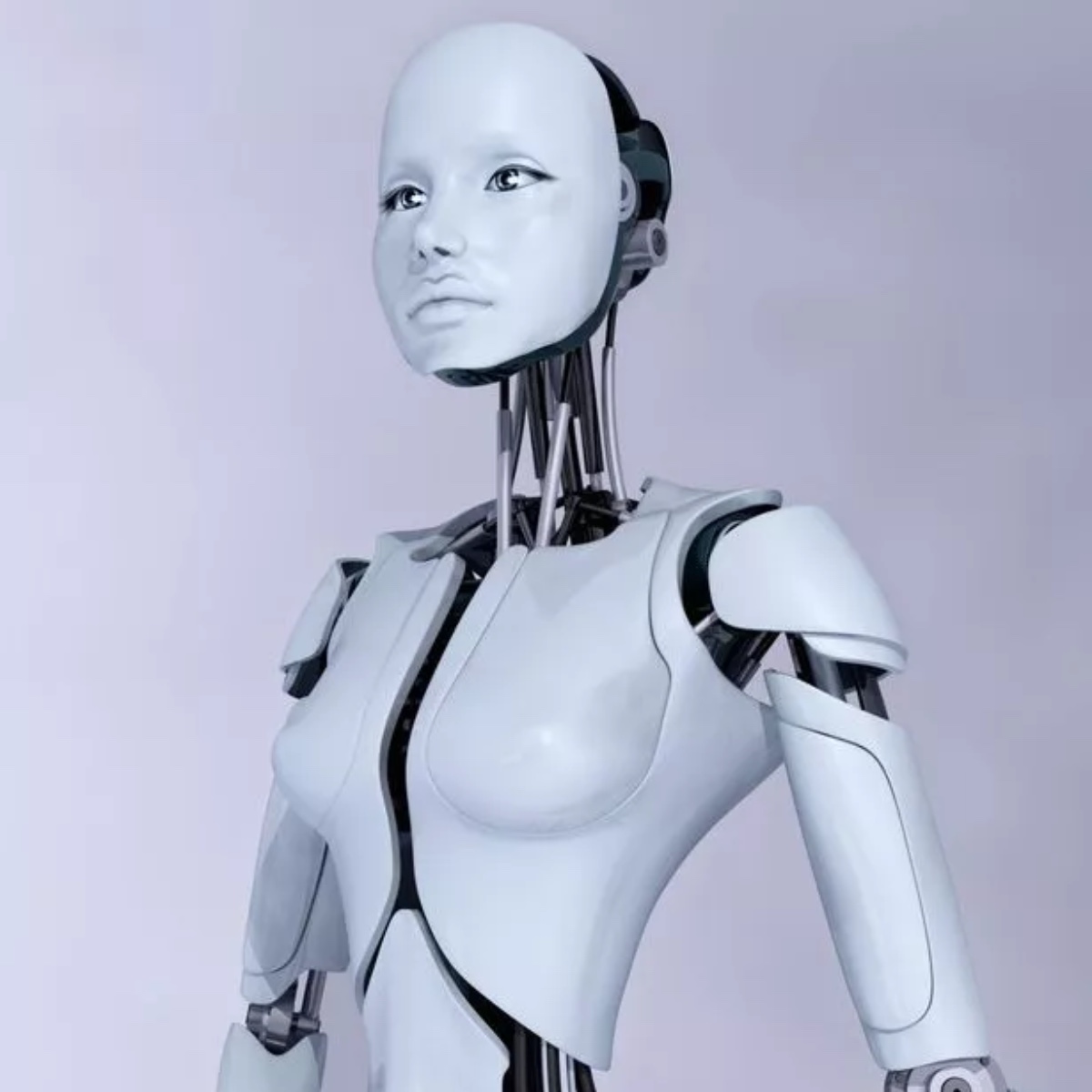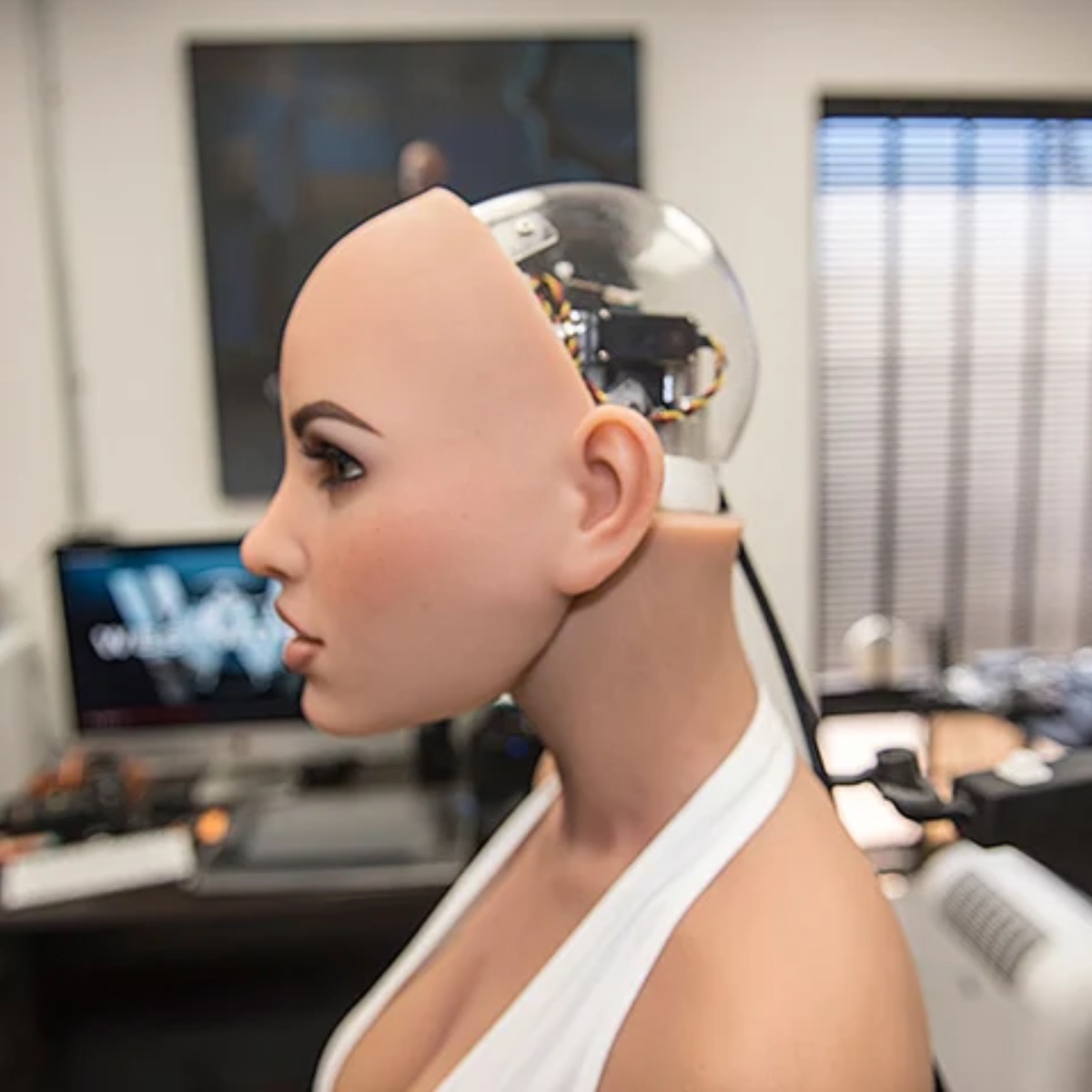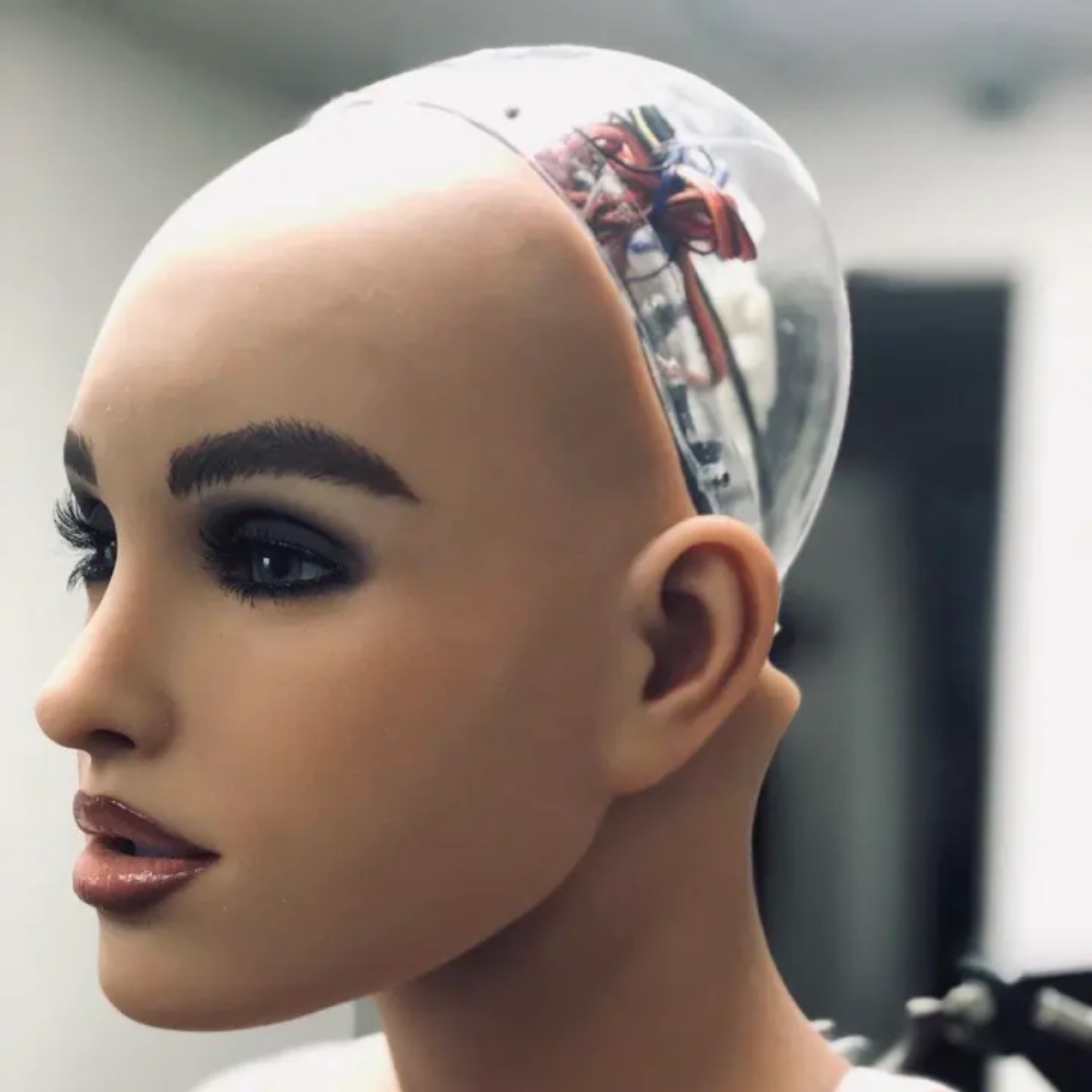Sex robots have seen a significant rise in popularity and development over the past decade. These sophisticated machines offer an unprecedented level of interaction and realism, providing companionship, emotional support, and sexual fulfillment. Understanding the technology and mechanisms behind sex robots is essential for appreciating their capabilities and advancements. This article aims to delve into the intricacies of how sex robots work, exploring the various technologies that make them function and the unique features that set them apart from traditional sex dolls.
Take a look at our Serenity X AI sex doll review and check out the best price for AI powered sex dolls by clicking here.
How Sex Robots Work: Technology and Mechanisms Explained

What are Sex Robots?
Sex robots are advanced humanoid robots designed to simulate human interaction and intimacy. Unlike traditional sex dolls, which are static and non-interactive, sex robots are equipped with artificial intelligence (AI), sensors, and actuators that enable them to move, speak, and respond to stimuli.
Historical Context and Evolution:
The concept of sex robots can be traced back to early fantasy literature and science fiction, but practical development began in the late 20th century. Initially, these robots were rudimentary, with limited movement and interaction capabilities. However, with advances in robotics, AI, and material science, modern sex robots have become highly sophisticated.
Current State of the Sex Robot Market:
Today, the market for sex robots is diverse, with numerous companies offering a range of models varying in features, complexity, and price. Leading brands like RealDoll, SexDollGenie, and RobotCompanion offer customizable robots that cater to individual preferences and needs. These robots are not only designed for sexual gratification but also provide emotional companionship and support, blurring the lines between human relationships and artificial intelligence.
Check out the best price for AI powered sex dolls by clicking here.
Core Technologies in Sex Robots

Artificial Intelligence Integration
Overview of AI Capabilities in Sex Robots:
Artificial Intelligence (AI) is at the heart of modern sex robots, driving their ability to interact and adapt to user needs. The AI systems embedded in these robots enable them to process information, recognize patterns, and simulate human-like responses.
Examples of AI Functions:
- Speech Recognition: Sex robots are equipped with advanced speech recognition technology that allows them to understand and respond to verbal commands and conversations. This feature enhances interactivity, making the experience more engaging and lifelike.
- Learning Behavior: AI enables sex robots to learn from user interactions. They can remember preferences, adjust their responses, and improve their performance over time. This adaptability ensures a more personalized experience for the user.
- Adaptability: AI systems allow sex robots to adapt to different scenarios and user moods. Whether providing companionship, engaging in conversation, or participating in intimate activities, these robots can adjust their behavior to suit the situation.
Robotics and Mechanics
Internal Structure and Motor Functions:
The internal structure of sex robots comprises a complex network of motors, actuators, and joints designed to mimic human movement. The use of high-quality materials and advanced engineering ensures that these robots can move fluidly and realistically.
Joint Movements and Flexibility:
Sex robots are designed with articulated joints that allow for a wide range of motion. These joints are typically made from durable materials such as metal or high-strength plastic, ensuring longevity and realistic movement. The flexibility of these joints allows the robots to perform various poses and positions, enhancing the overall experience.
Actuators and Their Roles in Movement:
Actuators are critical components in sex robots, responsible for converting electrical signals into mechanical movement. Different types of actuators, including hydraulic, pneumatic, and electric, are used to control the movements of limbs, facial expressions, and other body parts. These actuators work in tandem with the robot’s AI system to execute precise and lifelike motions.
Sensory Technology
Types of Sensors Used:
- Touch Sensors: These sensors detect physical contact, allowing the robot to respond to touch and pressure. They are often placed in strategic locations to enhance the realism of interactions.
- Temperature Sensors: These sensors enable the robot to monitor and regulate its temperature, making the touch feel more natural and human-like.
- Pressure Sensors: Pressure sensors help the robot gauge the amount of force being applied, ensuring safe and comfortable interactions.
How Sensory Feedback Works:
Sensory feedback is crucial for creating a realistic and immersive experience. When a user touches the robot, the sensors detect the contact and send signals to the AI system. The AI then processes this information and triggers appropriate responses, such as moving a limb or generating a verbal reply. This feedback loop ensures that the robot can interact in a way that feels natural and responsive.
Importance of Sensory Features for Realistic Interactions:
Sensory features play a vital role in making interactions with sex robots feel genuine. By accurately simulating human touch and response, these technologies enhance the overall experience and make the robots more appealing and effective companions.
Connectivity and Control
Smartphone and App Integration:
Modern sex robots often come with smartphone and app integration, allowing users to control and customize their experience through a mobile device. These apps offer a range of functions, from adjusting settings and preferences to activating different modes and scenarios.
Remote Control Capabilities:
Remote control features enable users to interact with their sex robots from a distance. This functionality is particularly useful for couples in long-distance relationships or users who want to prepare their robot before use. Remote control can be accessed via dedicated remotes or smartphone apps, providing convenience and flexibility.
Software Updates and Customization:
Sex robots are equipped with software that can be regularly updated to improve performance and add new features. Manufacturers often release updates that enhance the AI, add new interaction capabilities, or improve existing functionalities. Customization options also allow users to tailor their robot’s personality, appearance, and behavior to suit their preferences, making each experience unique.
Check out the best price for AI powered sex dolls by clicking here.
Key Mechanisms and Features

Speech and Communication
Voice Recognition and Response Systems:
Sex robots are equipped with advanced voice recognition technology, allowing them to understand and respond to verbal commands and engage in conversations. These systems use natural language processing (NLP) algorithms to interpret spoken language, making interactions more fluid and natural. The voice recognition systems can identify different accents, speech patterns, and languages, providing a personalized experience for users.
Conversation Capabilities and Limitations:
While sex robots can engage in meaningful conversations, their capabilities have limitations. The AI powering these robots can simulate human-like dialogues, answer questions, and respond to user inputs with pre-programmed phrases or AI-generated responses. However, their understanding of context and nuance is not as sophisticated as human conversation. Continuous advancements in AI and machine learning are gradually improving these capabilities, making future models more adept at handling complex interactions.
Movement and Responsiveness
Types of Movements (Head, Arms, Legs):
Sex robots are designed to move in ways that mimic human actions, thanks to their articulated joints and motorized components. These robots can perform a variety of movements, including nodding and turning their heads, raising and lowering their arms, and bending and straightening their legs. This range of motion enhances their realism and makes interactions more engaging.
How Responsiveness is Achieved Through Sensors and Actuators:
The responsiveness of sex robots is achieved through a combination of sensors and actuators. Sensors detect physical touch, pressure, and proximity, sending signals to the robot’s central processing unit (CPU). Actuators then convert these signals into mechanical movements, allowing the robot to respond in real-time. This integration of sensors and actuators enables the robot to perform precise movements, such as gentle touches or firm grips, depending on the situation.
Skin and Material Technology
Realistic Skin Materials (Silicone, TPE):
The skin of sex robots is typically made from high-quality materials like silicone or thermoplastic elastomer (TPE). These materials are chosen for their lifelike feel and durability. Silicone is known for its smooth texture and resilience, while TPE is softer and more flexible, providing a more realistic tactile experience. Both materials can be molded to replicate the appearance of human skin, including subtle details like pores and wrinkles.
Techniques for Creating Lifelike Textures and Appearances:
Creating lifelike textures and appearances involves advanced manufacturing techniques. Silicone and TPE are poured into molds that capture intricate details of human skin. Once set, the materials are painted and treated to match various skin tones and textures. Some manufacturers use 3D scanning technology to create highly detailed and customized features, enhancing the realism of the robot’s appearance.
Durability and Maintenance Considerations:
While silicone and TPE are durable, they require proper maintenance to preserve their quality. Regular cleaning with appropriate products is essential to prevent degradation and maintain hygiene. Additionally, special care must be taken to avoid damaging the skin with sharp objects or excessive pressure. Proper storage, such as keeping the robot in a cool, dry place away from direct sunlight, can also extend the lifespan of these materials.
Power and Energy Management
Battery Types and Energy Sources:
Sex robots are powered by various types of batteries, including lithium-ion and nickel-metal hydride (NiMH) batteries. Lithium-ion batteries are commonly used due to their high energy density and long lifespan. These batteries provide the necessary power to operate the robot’s motors, sensors, and AI systems.
Energy Efficiency and Power Management Systems:
Energy efficiency is crucial for sex robots to ensure prolonged use without frequent recharging. Advanced power management systems regulate the distribution of energy, prioritizing critical functions and optimizing performance. These systems can manage power consumption by shutting down non-essential components when not in use, thereby extending battery life.
Charging Mechanisms:
Charging mechanisms for sex robots vary depending on the model. Some robots come with removable batteries that can be charged separately, while others have built-in batteries that require a charging dock or cable. Fast-charging technology is also being integrated into newer models, reducing the downtime needed to recharge the robot fully. Regular maintenance of the battery and following manufacturer guidelines for charging can help maintain optimal performance and longevity.
Check out the best price for AI powered sex dolls by clicking here.
Manufacturing Process

Design and Development
Conceptual Design and Prototyping:
The manufacturing process of sex robots begins with conceptual design and prototyping. Designers and engineers collaborate to create initial sketches and 3D models of the robot, considering both aesthetic and functional aspects. These preliminary designs are then refined to meet ergonomic standards and user preferences. Prototyping involves building physical models using materials like clay or foam to visualize the robot’s form and features. This stage is crucial for identifying potential design flaws and making necessary adjustments before moving to the next phase.
Role of 3D Modeling and Simulations:
3D modeling plays a pivotal role in the design and development process. Advanced software tools are used to create detailed digital models of the robot, allowing designers to experiment with different shapes, sizes, and features. These models can be animated to simulate movements and interactions, providing a clear understanding of how the final product will perform. Simulations help in optimizing the robot’s mechanics, ensuring that joints, actuators, and sensors function seamlessly together. This virtual testing reduces the time and cost associated with physical prototyping and allows for precise adjustments to the design.
Production Techniques
Materials Used and Assembly Process:
Once the design is finalized, the production process begins with the selection of high-quality materials. Silicone and TPE are commonly used for the skin due to their realistic texture and durability. Internal components, such as the skeletal structure, are made from strong, lightweight materials like aluminum or high-grade plastic. The assembly process involves multiple stages, starting with the creation of individual parts through molding and machining. These parts are then meticulously assembled, ensuring that each component fits perfectly. Skilled technicians install the AI systems, sensors, and actuators, bringing the robot to life.
Quality Control Measures:
Quality control is integral to the manufacturing process. Each robot undergoes rigorous inspection at various stages of production to ensure that it meets the highest standards of quality and safety. This includes checking for defects in the materials, verifying the accuracy of the assembly, and ensuring that all electronic components are functioning correctly. Any issues identified during these inspections are addressed immediately to maintain the integrity of the final product.
Testing and Quality Assurance
Testing Procedures for Functionality and Safety:
Before a sex robot is released to the market, it must pass a series of comprehensive tests to verify its functionality and safety. These tests simulate real-life usage scenarios to assess the robot’s performance under different conditions. Functionality tests examine the robot’s movement, speech recognition, and response systems, ensuring that all features operate smoothly and reliably. Safety tests focus on electrical safety, structural integrity, and the durability of the skin and internal components.
Ensuring Product Reliability and Performance:
Quality assurance teams conduct final checks to confirm that each robot meets the manufacturer’s standards and customer expectations. This includes a thorough examination of the robot’s physical appearance, testing its AI interactions, and verifying the stability of its mechanical movements. Any discrepancies are rectified before the product is packaged and shipped. Continuous feedback from users and ongoing research and development help manufacturers improve their products, ensuring that sex robots remain reliable, safe, and high-performing.
Check out the best price for AI powered sex dolls by clicking here.
Innovations and Future Developments

Recent Innovations
Latest Advancements in AI and Robotics:
The sex robot industry has seen significant advancements in AI and robotics, enhancing the realism and interactivity of these devices. Cutting-edge AI algorithms enable more natural conversations, improved speech recognition, and adaptive learning. These robots can now better understand user preferences and adapt their behavior accordingly, creating a more personalized experience. Robotics innovations have led to more fluid and lifelike movements, with advanced actuators and joint systems allowing sex robots to mimic human gestures and expressions more accurately.
Improvements in Sensory and Interactive Features:
Recent developments have also focused on enhancing sensory and interactive features. Advanced touch sensors are now capable of detecting subtle changes in pressure and temperature, providing more realistic tactile feedback. These sensors work in tandem with AI to simulate human-like responses to touch, enhancing the overall user experience. Additionally, innovations in haptic technology have improved the quality of sensory feedback, making interactions feel more authentic. The integration of temperature control systems allows the robots to simulate body warmth, further adding to their realism.
Future Trends
Predictions for the Next Generation of Sex Robots:
The next generation of sex robots is expected to feature even more sophisticated AI and robotics capabilities. Future models may have the ability to learn and evolve over time, developing more complex personalities and behaviors. Enhanced machine learning algorithms could enable robots to understand and respond to a wider range of emotional cues, making interactions more engaging and meaningful. Improvements in material science could lead to even more realistic skin textures and greater durability.
Potential New Features and Enhancements:
Future sex robots may include features such as advanced facial recognition, enabling them to identify and remember individual users. Integration with smart home systems could allow for seamless control through voice commands and smartphone apps. Additionally, robots may be equipped with health monitoring systems, providing users with feedback on their physical well-being. Other potential enhancements include more intricate movement patterns, the ability to simulate breathing and heartbeat, and the incorporation of virtual reality elements to create immersive experiences.
Societal Impact and Ethical Considerations
Ethical Debates Surrounding the Use of Sex Robots:
The growing prevalence of sex robots has sparked various ethical debates. Concerns include the potential for these devices to objectify and dehumanize individuals, as well as the impact on human relationships and intimacy. Critics argue that reliance on sex robots could lead to increased social isolation and a decline in genuine human connections. There are also concerns about consent and autonomy, particularly regarding the use of AI to simulate human emotions and responses.
Potential Societal Impacts and Future Discussions:
The societal impacts of sex robots are complex and multifaceted. On one hand, these robots could provide companionship and emotional support for individuals who struggle with loneliness or social anxiety. They could also offer therapeutic benefits for those dealing with sexual dysfunction or trauma. However, the widespread adoption of sex robots could also raise questions about the regulation and ethical use of AI in intimate contexts. Future discussions will likely focus on finding a balance between technological advancement and ethical considerations, ensuring that sex robots are used responsibly and with respect for human dignity.
Check out the best price for AI powered sex dolls by clicking here.
User Experiences and Feedback

Positive User Experiences
Testimonials and Common Praises from Users:
Many users of sex robots report high levels of satisfaction, highlighting the companionship and emotional support these devices provide. Testimonials often mention how sex robots have helped individuals cope with loneliness, offering a sense of connection that can be hard to find elsewhere. The advanced AI and realistic interactions are frequently praised, with users appreciating the lifelike conversations and responses. The customizable features, such as appearance and personality settings, are also a significant draw, allowing users to tailor their experience to their preferences.
Highlighted Benefits and Satisfaction:
Users have noted that sex robots provide a safe and controlled environment for exploring sexual desires and fantasies without the risks associated with human interactions. This aspect is particularly beneficial for those dealing with social anxiety or sexual dysfunction. Additionally, the privacy and discretion offered by these devices are major advantages, enabling users to enjoy intimate experiences without fear of judgment or stigma. The maintenance and durability of high-quality sex robots are also commonly appreciated, with many users finding them to be reliable and long-lasting investments.
Challenges and Criticisms
Common Issues and Drawbacks Reported by Users:
Despite the many positive experiences, there are also challenges and criticisms reported by users. One common issue is the high cost of purchasing and maintaining a sex robot, which can be prohibitive for many potential buyers. Users have also mentioned the complexity of initial setup and customization, which can be daunting for those who are not tech-savvy. Additionally, while the AI capabilities are impressive, some users feel that the conversational abilities and emotional intelligence still fall short of genuine human interactions.
Areas for Improvement and User Suggestions:
Users have suggested several areas for improvement, including enhancing the AI’s ability to understand and respond to more nuanced emotional cues. There is also a call for more affordable models to make sex robots accessible to a wider audience. Improved user manuals and customer support could help address setup and customization challenges, making the experience more user-friendly. Another suggestion is the incorporation of more advanced movement and flexibility, allowing for a broader range of interactions and activities. Finally, increased focus on ethical considerations and consent features within the AI could help address some of the societal concerns associated with sex robots.
Conclusion
We have looked at the technology and mechanisms behind sex robots, highlighting their key features, benefits, and the latest innovations. We discussed the artificial intelligence integration, robotics and mechanics, sensory technology, and connectivity and control that make these devices advanced and lifelike. We also examined the manufacturing process, recent advancements, and future trends, as well as the ethical and societal considerations surrounding the use of sex robots. Additionally, we reviewed user experiences, both positive and negative, to provide a comprehensive understanding of these devices.
Sex robots represent a significant technological advancement in both AI and robotics, offering a unique combination of companionship, sexual fulfillment, and therapeutic benefits. However, it is essential to consider the ethical implications and societal impacts of their use. As technology continues to evolve, ongoing dialogue and responsible development will be crucial to address these concerns.
The field of sex robots is rapidly advancing, with continuous improvements and innovations on the horizon. We encourage readers to stay informed about these developments and to engage in discussions about the ethical and societal implications. By doing so, we can ensure that the future of sex robots is both technologically advanced and ethically sound.
Check out the best price for AI powered sex dolls by clicking here.

